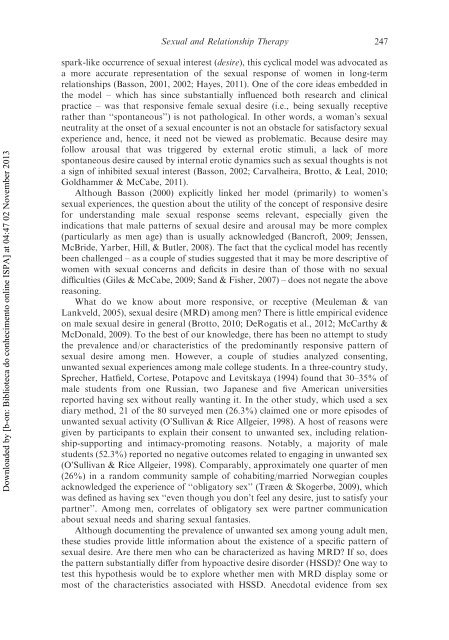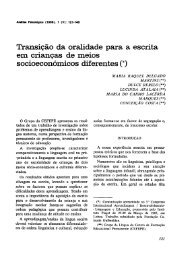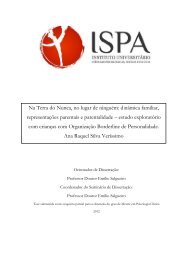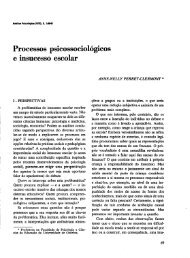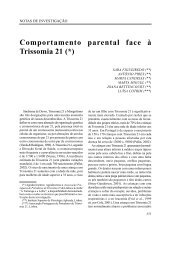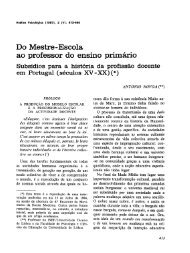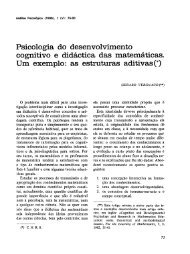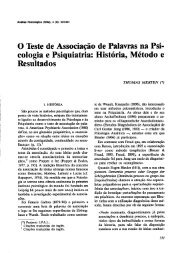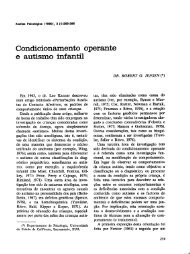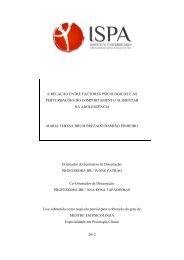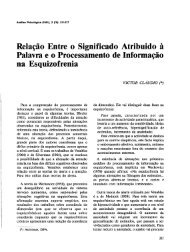Sexual and Relationship Therapy Is responsive sexual desire for ...
Sexual and Relationship Therapy Is responsive sexual desire for ...
Sexual and Relationship Therapy Is responsive sexual desire for ...
You also want an ePaper? Increase the reach of your titles
YUMPU automatically turns print PDFs into web optimized ePapers that Google loves.
<strong>Sexual</strong> <strong>and</strong> <strong>Relationship</strong> <strong>Therapy</strong> 247Downloaded by [b-on: Biblioteca do conhecimento online ISPA] at 04:47 02 November 2013spark-like occurrence of <strong>sexual</strong> interest (<strong>desire</strong>), this cyclical model was advocated asa more accurate representation of the <strong>sexual</strong> response of women in long-termrelationships (Basson, 2001, 2002; Hayes, 2011). One of the core ideas embedded inthe model – which has since substantially influenced both research <strong>and</strong> clinicalpractice – was that <strong>responsive</strong> female <strong>sexual</strong> <strong>desire</strong> (i.e., being <strong>sexual</strong>ly receptiverather than ‘‘spontaneous’’) is not pathological. In other words, a woman’s <strong>sexual</strong>neutrality at the onset of a <strong>sexual</strong> encounter is not an obstacle <strong>for</strong> satisfactory <strong>sexual</strong>experience <strong>and</strong>, hence, it need not be viewed as problematic. Because <strong>desire</strong> mayfollow arousal that was triggered by external erotic stimuli, a lack of morespontaneous <strong>desire</strong> caused by internal erotic dynamics such as <strong>sexual</strong> thoughts is nota sign of inhibited <strong>sexual</strong> interest (Basson, 2002; Carvalheira, Brotto, & Leal, 2010;Goldhammer & McCabe, 2011).Although Basson (2000) explicitly linked her model (primarily) to women’s<strong>sexual</strong> experiences, the question about the utility of the concept of <strong>responsive</strong> <strong>desire</strong><strong>for</strong> underst<strong>and</strong>ing male <strong>sexual</strong> response seems relevant, especially given theindications that male patterns of <strong>sexual</strong> <strong>desire</strong> <strong>and</strong> arousal may be more complex(particularly as men age) than is usually acknowledged (Bancroft, 2009; Jenssen,McBride, Yarber, Hill, & Butler, 2008). The fact that the cyclical model has recentlybeen challenged – as a couple of studies suggested that it may be more descriptive ofwomen with <strong>sexual</strong> concerns <strong>and</strong> deficits in <strong>desire</strong> than of those with no <strong>sexual</strong>difficulties (Giles & McCabe, 2009; S<strong>and</strong> & Fisher, 2007) – does not negate the abovereasoning.What do we know about more <strong>responsive</strong>, or receptive (Meuleman & vanLankveld, 2005), <strong>sexual</strong> <strong>desire</strong> (MRD) among men? There is little empirical evidenceon male <strong>sexual</strong> <strong>desire</strong> in general (Brotto, 2010; DeRogatis et al., 2012; McCarthy &McDonald, 2009). To the best of our knowledge, there has been no attempt to studythe prevalence <strong>and</strong>/or characteristics of the predominantly <strong>responsive</strong> pattern of<strong>sexual</strong> <strong>desire</strong> among men. However, a couple of studies analyzed consenting,unwanted <strong>sexual</strong> experiences among male college students. In a three-country study,Sprecher, Hatfield, Cortese, Potapovc <strong>and</strong> Levitskaya (1994) found that 30–35% ofmale students from one Russian, two Japanese <strong>and</strong> five American universitiesreported having sex without really wanting it. In the other study, which used a sexdiary method, 21 of the 80 surveyed men (26.3%) claimed one or more episodes ofunwanted <strong>sexual</strong> activity (O’Sullivan & Rice Allgeier, 1998). A host of reasons weregiven by participants to explain their consent to unwanted sex, including relationship-supporting<strong>and</strong> intimacy-promoting reasons. Notably, a majority of malestudents (52.3%) reported no negative outcomes related to engaging in unwanted sex(O’Sullivan & Rice Allgeier, 1998). Comparably, approximately one quarter of men(26%) in a r<strong>and</strong>om community sample of cohabiting/married Norwegian couplesacknowledged the experience of ‘‘obligatory sex’’ (Træen & Skogerbø, 2009), whichwas defined as having sex ‘‘even though you don’t feel any <strong>desire</strong>, just to satisfy yourpartner’’. Among men, correlates of obligatory sex were partner communicationabout <strong>sexual</strong> needs <strong>and</strong> sharing <strong>sexual</strong> fantasies.Although documenting the prevalence of unwanted sex among young adult men,these studies provide little in<strong>for</strong>mation about the existence of a specific pattern of<strong>sexual</strong> <strong>desire</strong>. Are there men who can be characterized as having MRD? If so, doesthe pattern substantially differ from hypoactive <strong>desire</strong> disorder (HSSD)? One way totest this hypothesis would be to explore whether men with MRD display some ormost of the characteristics associated with HSSD. Anecdotal evidence from sex


